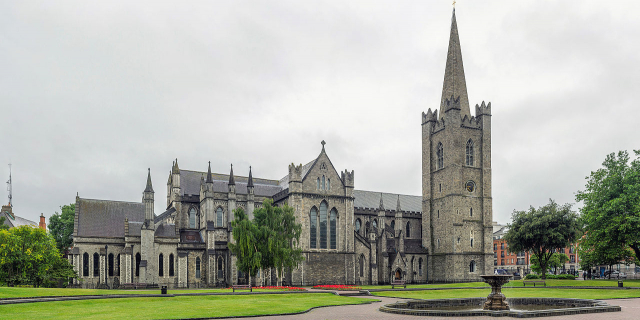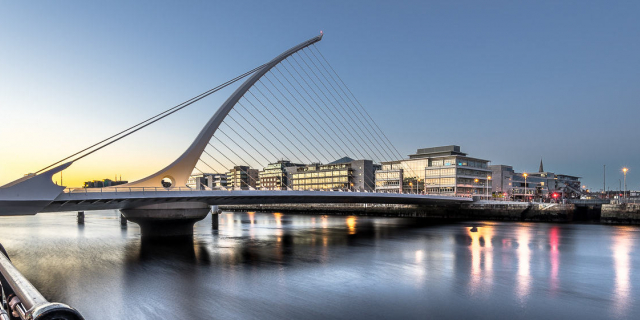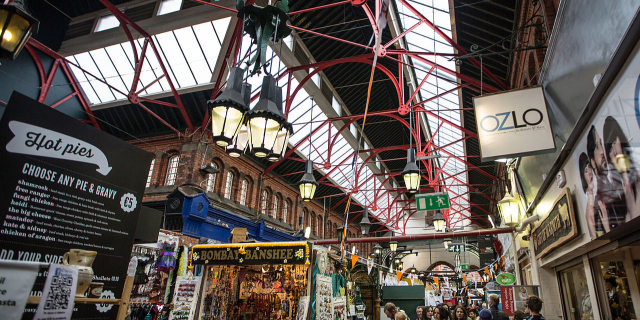The Phoenix Park (Irish: Páirc an Fhionnuisce) is a large urban park in Dublin, Ireland, lying 2–4 kilometres (1.2–2.5 mi) west of the city centre, north of the River Liffey. Its 11 kilometres (6.8 mi) perimeter wall encloses 707 hectares (1,750 acres) of recreational space. It includes large areas of grassland and tree-lined avenues, and since the 17th century has been home to a herd of wild fallow deer. The Irish Government is lobbying UNESCO to have the park designated as a World Heritage Site.
 Phoenix Park. Outside car (Jaunting car). Postcard, c. 1905
Phoenix Park. Outside car (Jaunting car). Postcard, c. 1905The park's name is derived from the Irish fhionnuisce, meaning clear or still water.[1]
After the Normans conquered Dublin and its hinterland in the 12th century, Hugh Tyrrel, 1st Baron of Castleknock, granted a large area of land, including what now comprises the Phoenix Park, to the Knights Hospitaller. They established an abbey at Kilmainham on the site now occupied by Royal Hospital Kilmainham. The knights lost their lands in 1537 following the Dissolution of the Monasteries under Henry VIII of England. Eighty years later the lands reverted to the ownership of the King's representatives in Ireland.
On the restoration of Charles II of England, his Viceroy in Dublin, the Duke of Ormond, established a royal hunting park on 2,000 acres (810 ha) of the land in 1662. It contained pheasants and wild deer, making it necessary to enclose the entire area with a wall. The cost of building the park had amounted to £31,000 by 1669.[1]
The park originally included the demesne of Kilmainham Priory south of the River Liffey. When the building of the Royal Hospital at Kilmainham commenced in 1680 for the use of veterans of the Royal Irish Army, the park was reduced to its present size, all of which is now north of the river. It was opened to the people of Dublin by the Earl of Chesterfield in 1745.
In the nineteenth century, the expanse of the park had become neglected. With management being taken over by the Commissioners of Woods and Forests, the renowned English Landscape architect, Decimus Burton, was retained to design an overall plan for the public areas of the park. The execution of the plan, which included new paths, gate-lodges (including the architecturally significant Chapelizod gate lodge [2]), levelling and tree planting, and relocating the Phoenix Column, took almost 20 years to complete. According to the park's official site,
Burton's involvement for nearly two decades represents the greatest period of landscape change since the Park's creation by the Duke of Ormond.[3] Deer resting in the Phoenix Park
Deer resting in the Phoenix ParkIn 1882, the park was the location of the Phoenix Park Murders. The Chief Secretary for Ireland (the British Cabinet minister with responsibility for Irish affairs), Lord Frederick Cavendish and the Under-Secretary for Ireland (chief civil servant), Thomas Henry Burke, were stabbed to death with surgical knives while walking from Dublin Castle. A small insurgent group called the Irish National Invincibles were responsible.[4]
During the Emergency thousands of tons of turf were transported from the bogs to Dublin and stored in high mounds along the main road of the park.[5][6][7]
In October 2023 the park got its first ever shuttle bus service with the launch of Route 99, connecting the Park's visitor center at Ashford Castle with Parkgate Street just outside the park, near Heuston Station.[8]




































Add new comment